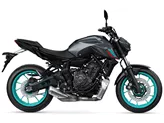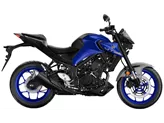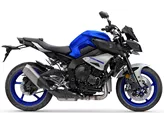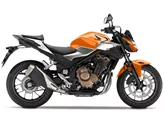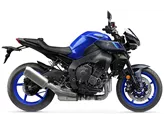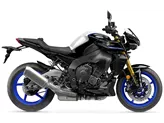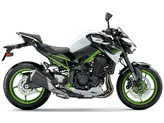Yamaha MT-10 2016 vs. Yamaha MT-07 2017

Yamaha MT-10 2016

Yamaha MT-07 2017
Overview - Yamaha MT-10 2016 vs Yamaha MT-07 2017
The Yamaha MT-10 2016 and the Yamaha MT-07 2017 are both naked bikes from Yamaha, but they have several differences in terms of their technical specifications and strengths.
Starting with the engine, the Yamaha MT-10 2016 is equipped with a powerful in-line 4-cylinder engine with a displacement of 998cc. It produces an impressive 160 horsepower and 111 Nm of torque. On the other hand, the Yamaha MT-07 2017 features a smaller in-line 2-cylinder engine with a displacement of 689cc. It generates 75 horsepower and 68 Nm of torque. While the MT-10 offers more power, the MT-07 is still praised for its great motor.
In terms of suspension, the MT-10 2016 comes with an upside-down telescopic fork at the front, providing excellent stability and agility. The MT-07 2017, on the other hand, features a telescopic fork at the front. Both bikes have double disk brakes at the front, ensuring strong stopping power.

Yamaha MT-10 2016
When it comes to the chassis, the MT-10 2016 has an aluminum frame, which contributes to its lightweight and nimble handling. The MT-07 2017, on the other hand, has a steel frame. While the aluminum frame of the MT-10 is considered to be a strength, the steel frame of the MT-07 is criticized for being too soft.
In terms of dimensions and weights, both bikes have similar front tire width and diameter, with 120mm and 17 inches respectively. The MT-10 has a wider rear tire with a width of 190mm, while the MT-07 has a slightly narrower rear tire with a width of 180mm. Both bikes have the same wheelbase of 1400mm. The seat height of the MT-10 is 825mm, while the MT-07 has a slightly lower seat height of 805mm. The MT-10 also has a higher kerb weight of 210kg compared to the MT-07's 182kg. In terms of fuel tank capacity, the MT-10 has a larger capacity of 17 liters, while the MT-07 has a smaller capacity of 14 liters.

Yamaha MT-07 2017
In terms of strengths, the MT-10 2016 is praised for its CP4 engine, which gives it a strong character and an unmistakable sound. It is also highly agile and offers high-speed stability. The strong brakes of the MT-10 are also worth mentioning. On the other hand, the MT-07 2017 is commended for its great motor and easy-to-read display. It is also priced lower than the MT-10, making it more affordable.
However, both bikes have their weaknesses. The MT-10 2016 is criticized for its poor comfort, limited wind protection, and hard fit. The MT-07 2017, on the other hand, is criticized for having a chassis that is too soft.
In conclusion, the Yamaha MT-10 2016 and the Yamaha MT-07 2017 are both naked bikes with their own strengths and weaknesses. The MT-10 offers more power and agility, while the MT-07 is more affordable and has a great motor. Ultimately, the choice between the two will depend on the rider's preferences and priorities.
Technical Specifications Yamaha MT-10 2016 compared to Yamaha MT-07 2017
Pros and Cons in comparison
Pros and Cons in comparison
Yamaha MT-10 2016

The short and stocky MT-10 is the furthest away from the R1 superbike of the renowned power naked bikes, both in terms of looks and chassis, but the heart of the MT-10 is directly descended from the racetrack weapon and fascinates with a uniquely raw sound and power from below thanks to the typical crank pin offset, which, with a modified firing order, ensures this unique character. The resulting 160 hp therefore only seem a little weak on paper compared to the more than 200 hp of the R1, in reality the MT-10 also ignites incredible fireworks. The suspension would probably be too soft for the race track, but it is just right for a country road fight, and the brakes do the same - probably only acceptable for the track, but perfect for the country road.
Yamaha MT-07 2017
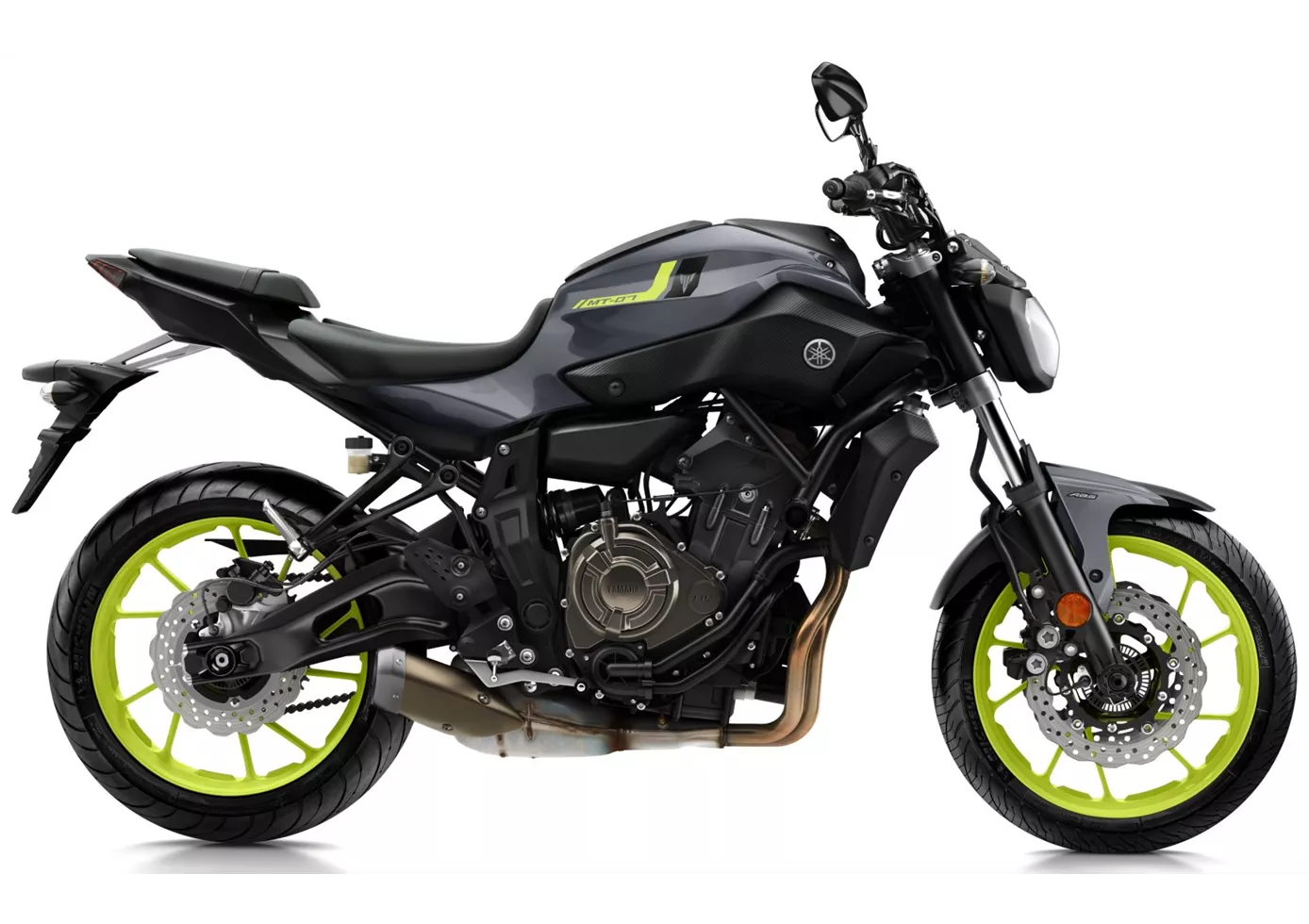
Even after three years, the Yamaha MT-07 is still a public favourite. No one else beats such a price-performance ratio. The two-cylinder engine is powerful, but can be dosed very gently at low revs. The display is also one of the best in this class, with good readability. Only the chassis is disappointing. In a sporty riding style, it is simply too soft, which can cause the MT-07 to sway.
Price Comparison Avarage Market Price Yamaha MT-10 vs Yamaha MT-07
There are a few key differences between a Yamaha MT-10 2016 and a Yamaha MT-07 2017. In terms of price, the actual average price of a Yamaha MT-10 2016 is about 53% higher. A Yamaha MT-10 2016 experiences a loss of 810 GBP in one year and 1,870 GBP in two years of ownership. This is offset by a loss of 240 GBP and 380 GBP for a Yamaha MT-07 2017. Compared to Yamaha MT-07 2017 there are less Yamaha MT-10 2016 bikes available on the 1000PS.de Marketplace, specifically 7 compared to 20. It takes less time to sell a Yamaha MT-07 with 83 days compared to 97 days for the Yamaha MT-10. Since model year 2016 1000PS.de editors have written 32 reviews for the Yamaha MT-10 and 69 reviews for the Yamaha MT-07 since model year 2013. The first review for the Yamaha MT-10 was published on 17/11/2015 and now has more than 20,700 views. This compares to more than 12,600 views for the first review on Yamaha MT-07 published on 04/11/2013.




